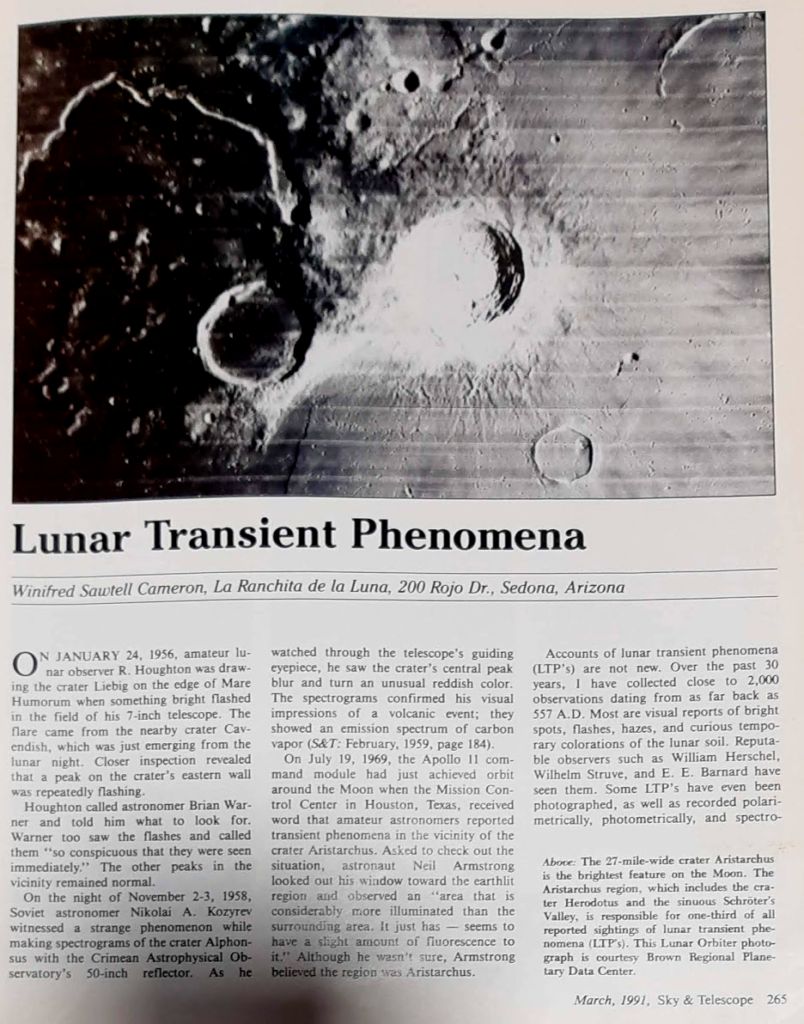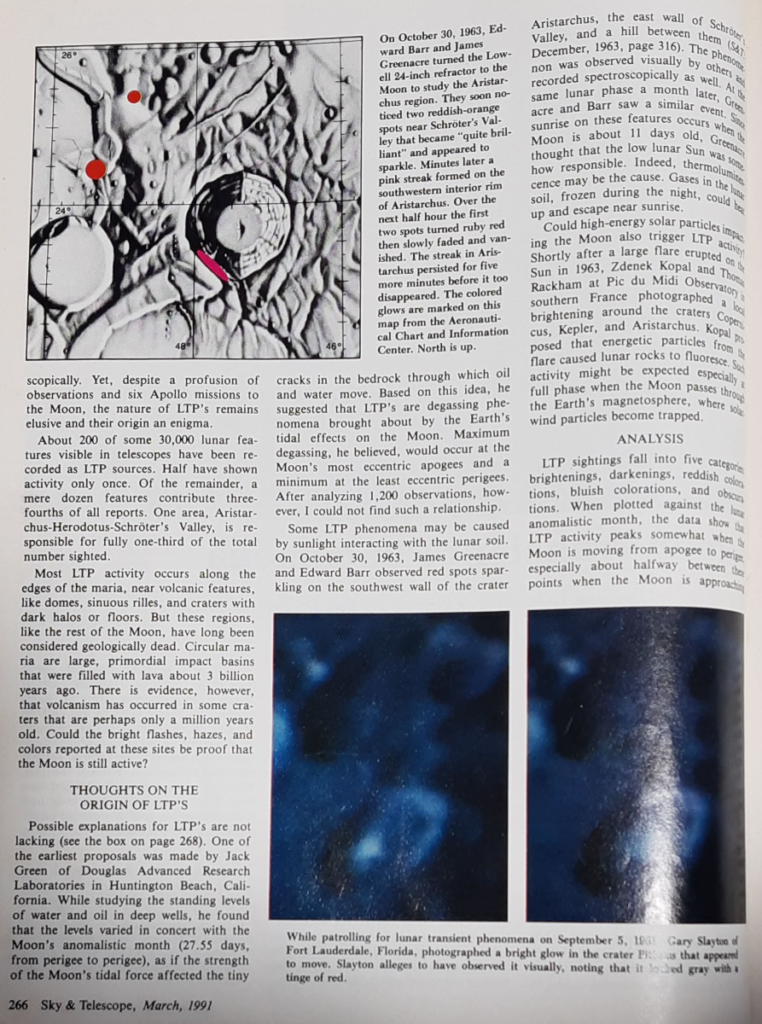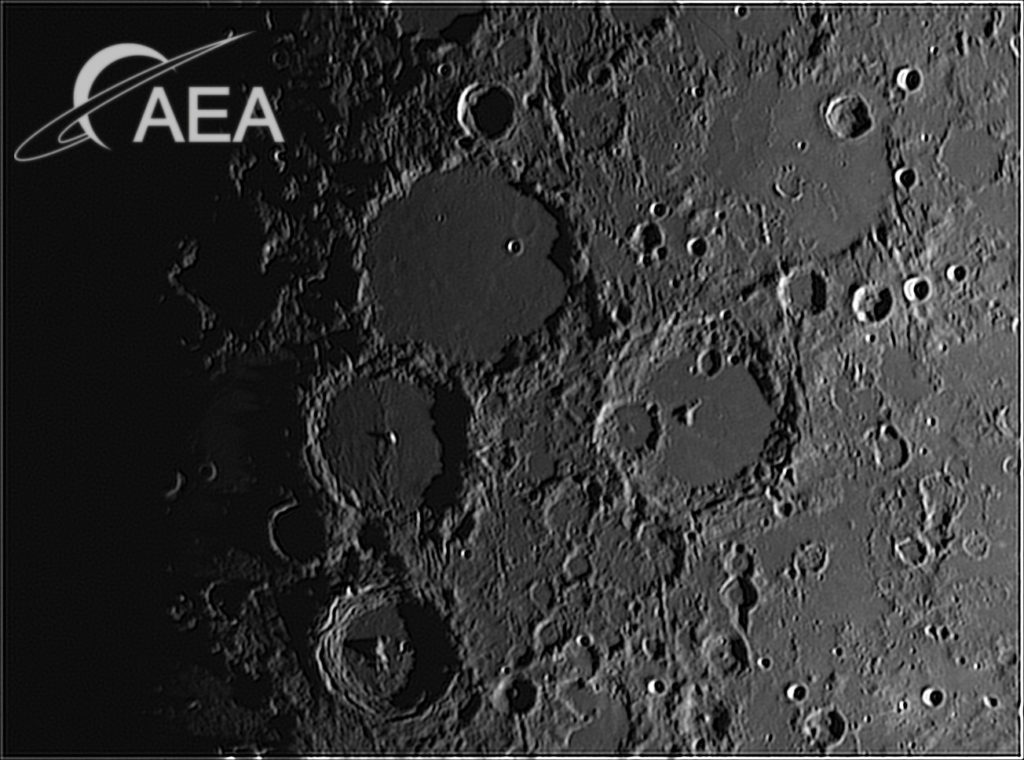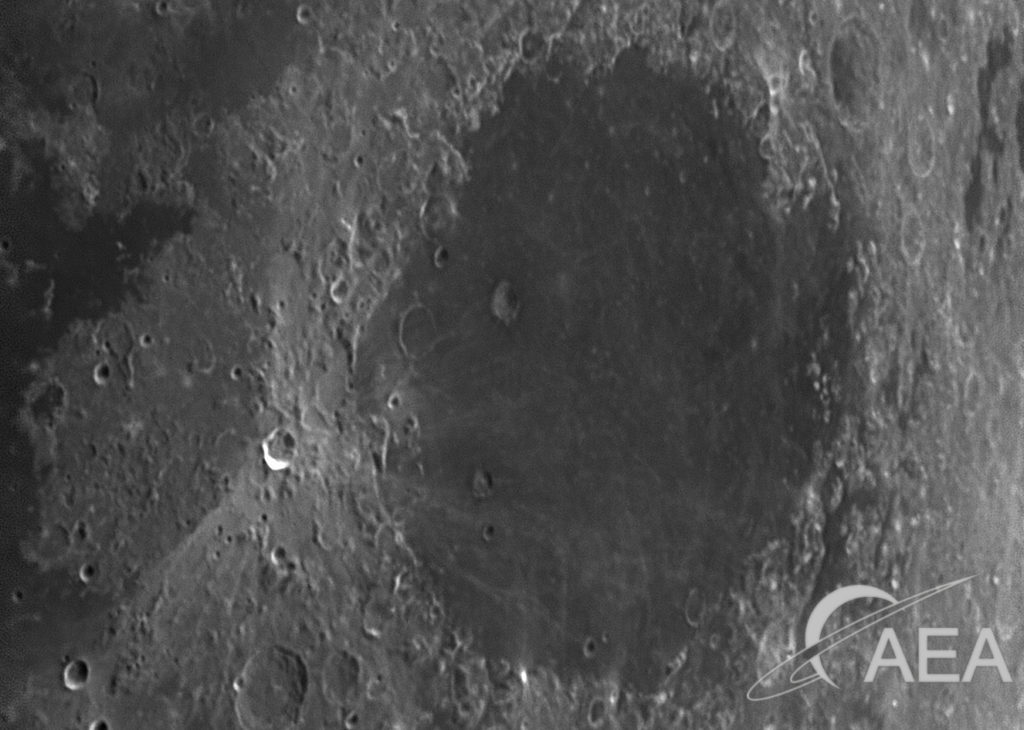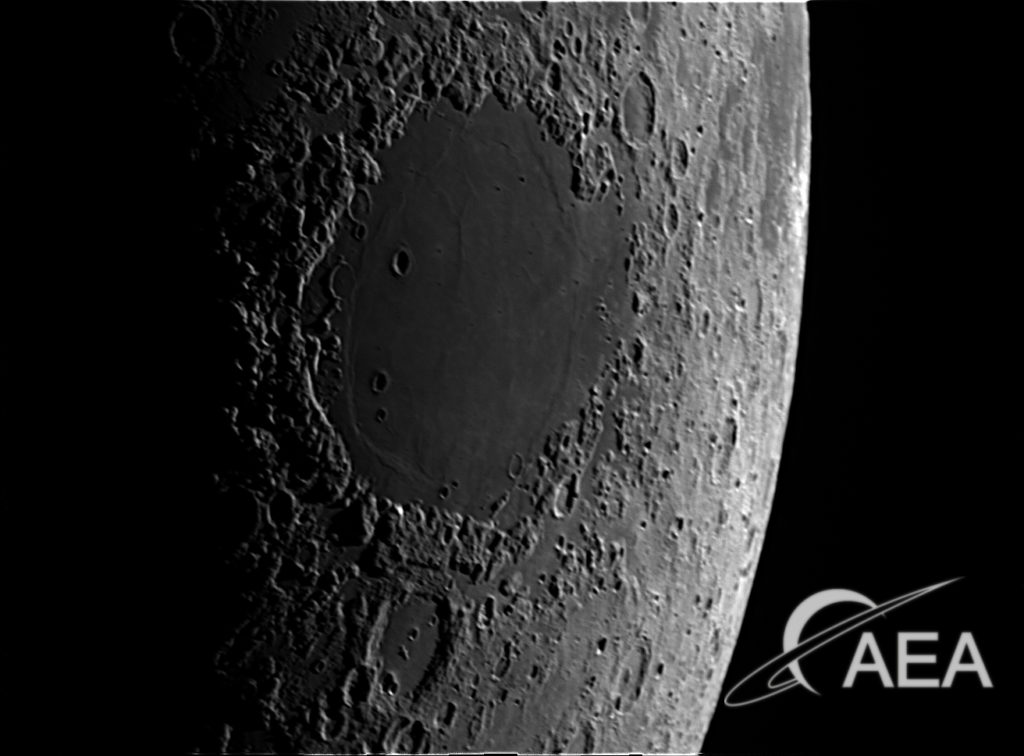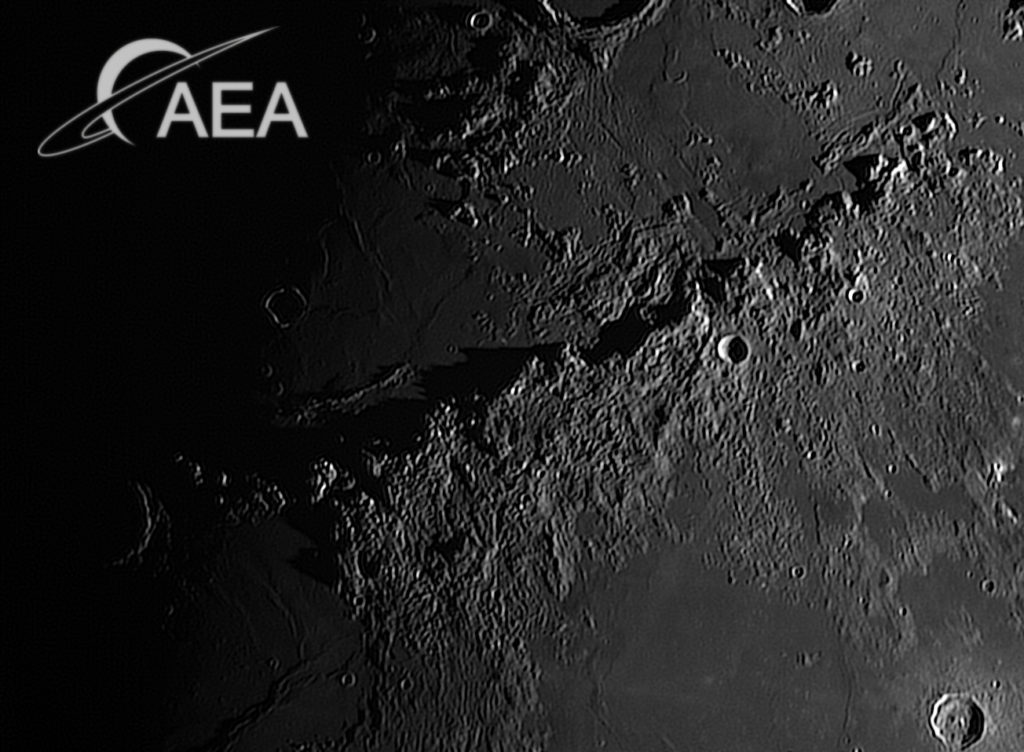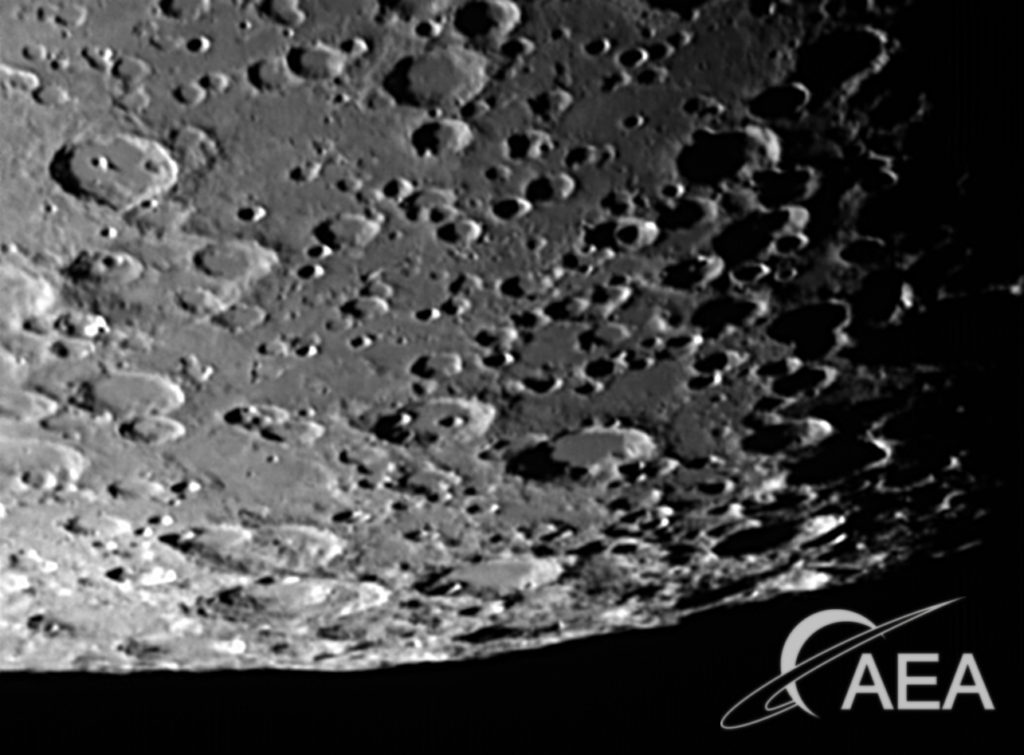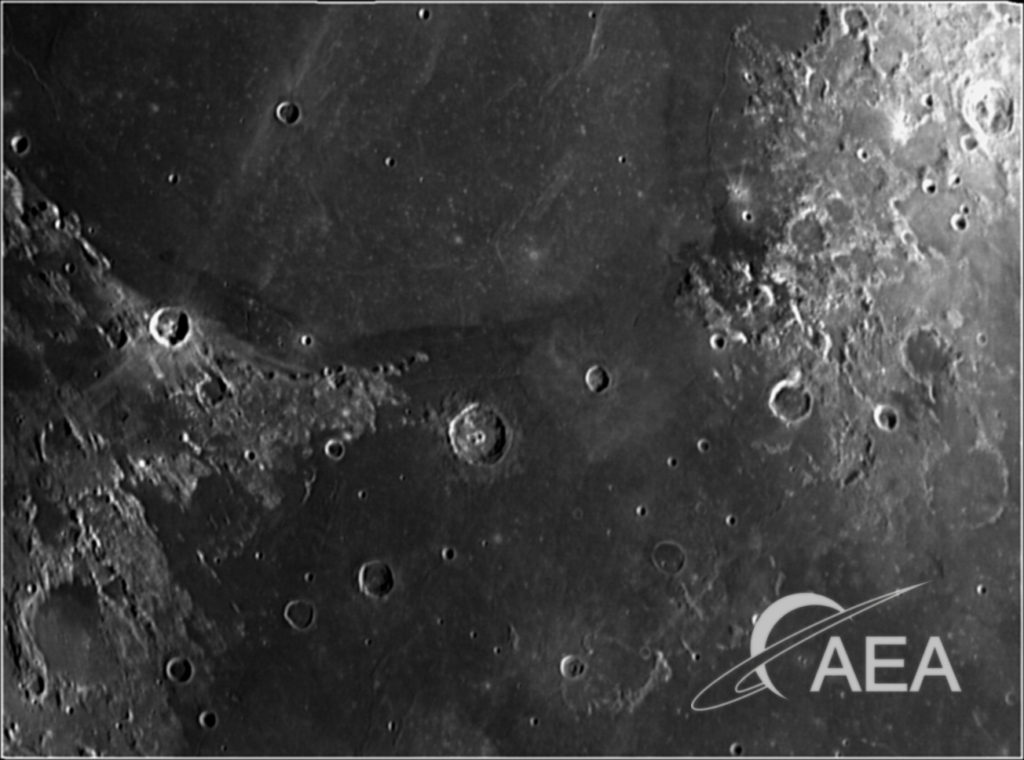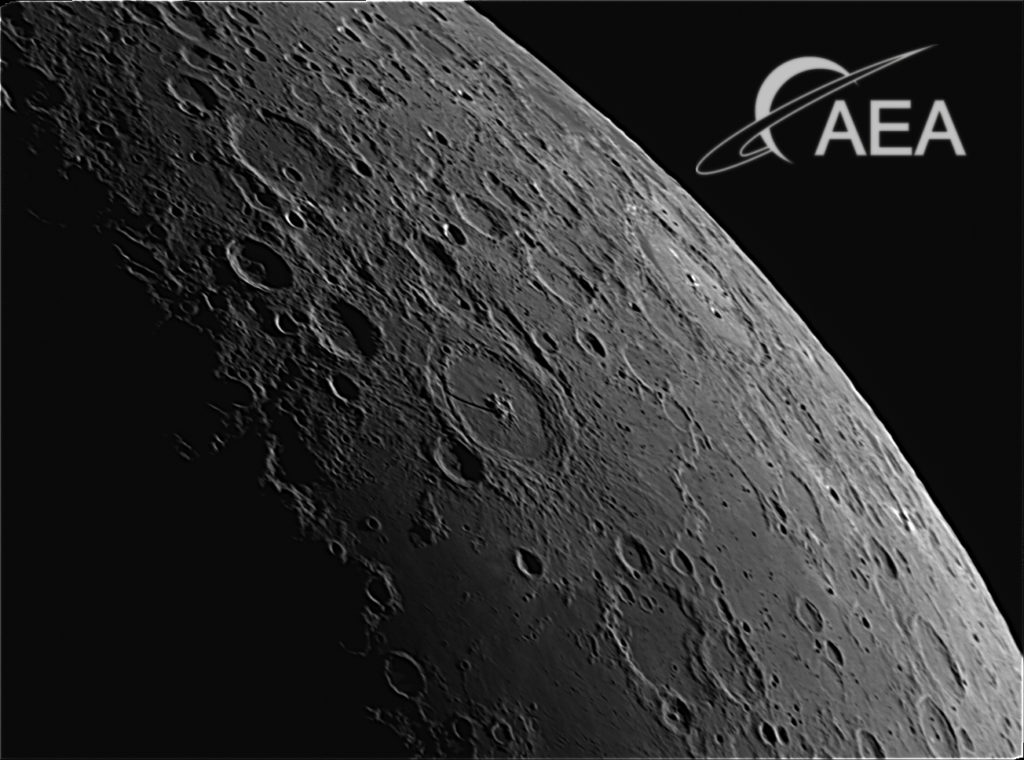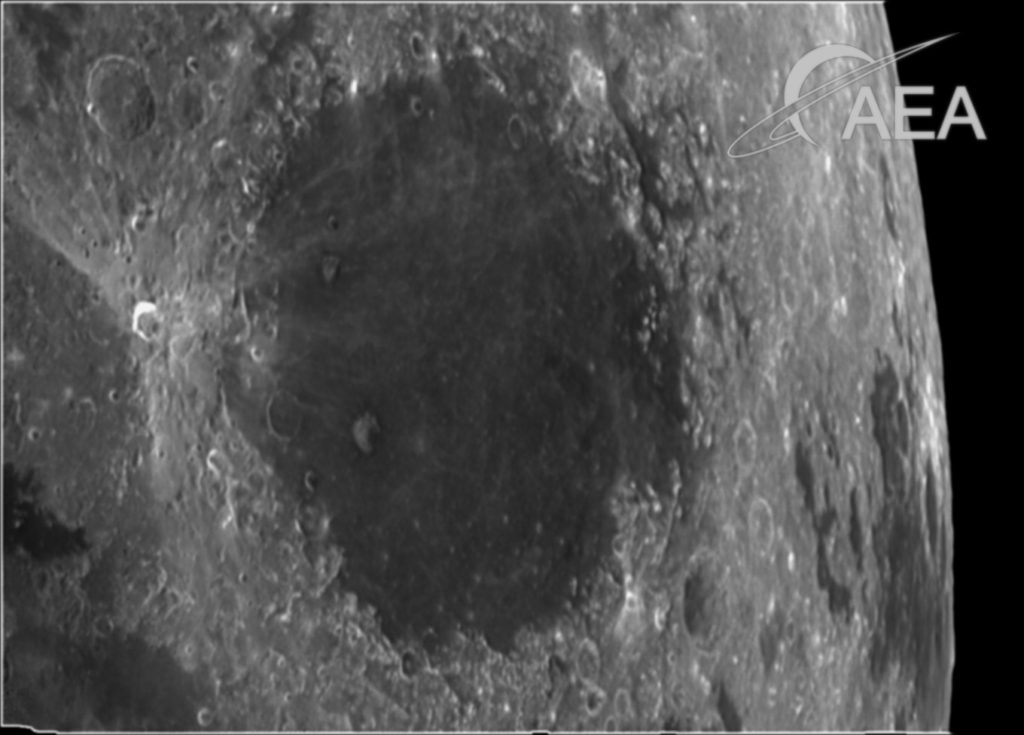En el mes de diciembre de 2019, el Departamento de Investigación de la Asociación Entrerriana de Astronomía realizó aportes al Programa de detección de cambios geológicos lunares dependiente de la Asociación de Observadores Lunares y Planetarios (ALPO).
Los reportes se realizan en forma directa al coordinador del programa, Dr. Anthony Cook quien elabora los análisis correspondientes.
Realizamos los siguientes aportes:
- Aylen Borgatello imágenes de Alphonsus y Ross D.
- Walter Elias imágenes de Mare Crisium Mons Piton, Pitiscus y Swift.
- Victoria Gomez imágenes de Purbach.
- Facundo Gramer imágenes de Mare Crisium y Plato.
- Alan Trumper imágenes de Montes Appeninus y Snellius.
A continuación las observaciones seleccionadas y el correspondiente análisis del Dr. Cook. Cabe destacar que, según lo aclara Cook en TLO, en esta edición no se realizaron cambios de pesos (en este link se explica en detalle el procedimiento seguido) por el poco tiempo disponible en esta época del año.
En cada observación, pondremos como bloque de anotación la original en inglés y su correspondiente traducción. Al final, el link de descarga al PDF completo de la edición de Diciembre de 2019 de «The Lunar Observer».
Reporte 1:
Pitiscus: On 2019 Oct 05 UT 22:39 Walter Elias (AEA) imaged the Pitiscus region of the Moon under similar illumination (within ±0.5o) to the following Sky and Telescope report:
[REF 14] Pitiscus 1981 Sep 05 UT ??:?? but assumed to be AM? which would make it 00:00-03:00UTC. Observed by Slayton (Fort Lauderdale, Florida, USA, 8″ reflector, ASA 64EK7 f/170, Kodak Kodachrome) photographed a bright glow in the crater that appeared to move. Observer also reported seeing it visually noting that it looked gray with a tinge of red. For further information see p266 of Sky & Telescope (1991, March). Note that Cameron gives the date and UT at 1981 Sep 06 UT 01:00-01:30, or one day later. I will use this date and time from now on. The Cameron 2006 catalog ID=152 and weight=5. The ALPO/BAA weight=3.
Walter’s image shows nothing of the moving glow effect shown in the Slayton images (Fig 2). Such effects can be caused easily by internal reflections inside Barlow projection lenses, though the observer at the time reported seeing the effect visually? Anyway, in view of the time uncertainty in the original report, Walter’s image can help us pin down the range of possible times for the Slayton photo more accurately.
Pitiscus: El 5 de octubre de 2019 a las 22:39 (GMT) Walter ELias (AEA) tomó una imagen de la región lunar de Pitiscus con iluminación similar al reporte de la revista Sky and Telescope.
La imagen de Walter no muestra nada del efecto de brillo en movimiento que se muestra en las imágenes de Slayton (Fig. 2). Tales efectos pueden ser causados fácilmente por reflejos internos dentro de las lentes de proyección Barlow, aunque el observador en el momento informó haber visto el efecto visualmente. De todos modos, en vista de la incertidumbre del tiempo en el informe original, la imagen de Walter puede ayudarnos a precisar el rango de tiempos posibles para la foto de Slayton con mayor precisión.

En este punto es importante destacar que al consultar a Luis Trumper, Presidente de nuestra Asociación, si tenía el número de Sky and Telescope mencionado en la observación, inmediatamente nos confirmó contar con el mismo y lo puso a disposición. A continuación imágenes de dicho número de la prestigiosa revista (página 266 de «Sky & Telescope» de marzo de 1991)
Reporte 2
Purbach: On 2019 Oct 06 UT 22:06 Victoria Gomez imaged this crater under similar illumination (within ±0.5o) to the following report:
[REF 17] Purbach 1970 Apr 14 UT 12:00-14:00 Observed by Osawa (Awajt- Shima, Japan, 8″ reflector, x288) «Photos in blue and orange taken. Ill-defined obscur. in blue photo in S. part of crater compared with orange. (neg. is so faint it is doubtful. Apollo 13 watch. Similar to Alter’s findings in Alphonsus).» NASA catalog weight=2. NASA catalog ID #1250. ALPO/BAA weight=1.
The 118 km diameter Purbach crater in Fig 4 shows no apparent sign of any obscuration on the southern part of the crater. However, the image is in monochrome.
Purbach: el 06 de octubre de 2019 22:06 (GMT), Victoria Gómez fotografió este cráter bajo una iluminación similar (dentro de ± 0.5o)
[REF 17] Purbach 1970 abr 14 UT 12: 00-14: 00 Observado por Osawa (Awajt- Shima, Japón, 8 «reflector, x288)» Fotos tomadas en azul y naranja. Se nota un oscurecimiento en la parte Sur del cráter.
El cráter Purbach de 118 km de diámetro en la Fig. 4 no muestra signos aparentes de oscurecimiento en el parte sur del cráter. Sin embargo, la imagen está en monocromo.

Reporte 3
Alphonsus: On 2019 Oct 06 UT 22:09 Aylen Borgatello (AEA) imaged and at 23:10-23:20 Alberto Anunziato (SLA) observed visually this crater under similar illumination (within ±0.5o) to the following two reports:
[REF 18] Alphonsus 1967 Aug 13 UT 18:40-18:55 Observed by Horowitz (Haifa, Israel, 8″ reflector?) «Glow or hazy patch seen while using filters. Brighter than background. Not seen after 2055 or next nite» NASA catalog weight=3. NASA catalog ID #1041. ALPOP/BAA weight=2.
[REF 19] On 1990 May 03 at UT 02:03 D. Darling (Sun Praire, WI, USA, seeing steady) observed a point of light inside Alphonsus just to the north of the central peak, along the «center ridge». It was seen again, half way between the central peak and the noth west rim – along the ridge. All other features were normal. The Cameron 2006 catalog ID=403 and the weight=3. The ALPO/BAA weight=3.
Alberto was using a 105 mm Maksutov-Cassegrain (Meade EX 105) at a magnification of 154x. He could see quite clearly, with detail, the central peak, but none of the other events reported. Likewise, in the image (Fig 5) by Aylen, there is no sign of any glow or hazy patch (though the image is monochrome), nor any white spot north of the central peak. Although Alberto’s observation was purely visual, it is important to remember that the original LTP observations were made visually too.
En esta observación de Alphonsus, el Dr. Cook toma dos reportes, uno de nuestra compañera Aylen Borgatello y otro del colega Alberto Anunziato de la Sociedad Lunar Argentina y los utiliza para analizar dos observaciones previas similares, de 1967 y 1990.
Alberto usó un telescopio Maksutov-Cassegrain de 105 mm (Meade EX 105) con un aumento de 154x. Podía ver con bastante claridad, con detalle, el pico central, pero ninguno de los otros eventos reportados. Del mismo modo, en la imagen (Fig. 5) de Aylen, no hay signos de ningún resplandor o parche brumoso (aunque la imagen es monocromática), ni ninguna mancha blanca al norte del pico central. Aunque la observación de Alberto fue puramente visual, es importante recordar que las observaciones originales de LTP también se hicieron visualmente.

Reporte 4
Snellius: On 2019 Oct 31 UT 22:35 Alan Trumper (AEA) imaged this crater just 7 min outside similar repeat illumination and topocentric libration (within ±1.0o) to the following report:
[REF 28] On 1978 Dec 01 at 17:00UT Christie (England?, x60 magnification) found Snellius to be indistinct (could not locate). Cameron 2006 catalog ID=23 and weight=1. ALPO/BAA weight=1.
Snellius: el 31 de octubre de 2019 UT 22:35, Alan Trumper (AEA) fotografió este cráter solo 7 minutos por fuera del intervalo de iluminación similar y la libración topocéntrica (dentro de ± 1.0o) en comparación con el siguiente reporte:
[REF 28] El 1 de diciembre de 1978 a las 17: 00UT Christie (Inglaterra ?, aumento x60) encontró que Snellius era indistinto (no se pudo localizar). ID del catálogo de Cameron 2006 = 23 y peso = 1. ALPO / BAA peso = 1.
Snellius se ve claramente en el centro de la fotografía siguiente.

Reporte 5
Mare Crisium as imaged by Facundo Gramer (AEA) on 2019 Oct 31 UT 23:31 and orientated with north towards the top.
[REF 29] Mare Crisium 1972 Mar 18 UT 19:06-21:00 Observed by Prvost and Dorchain (Belgium, 3.5″ reflector, 168x and 336x) «at 1906h Pruvust rep’ted 2 pts. moving from Auzout to Prom. Olivium. Minutes later, Dorchain saw a new pt. Others saw nothing unusual fr. 1912-2100h (Fitton, Ash, Peters, Watkins, et al in England – but this was later than the event)» NASA catalog weight=2. NASA catalog ID #1325. ALPO/BAA weight=1.

A continuación una galería fotográfica de las imágenes reportadas y que forman parte de esta edición de «The Lunar Observer».
DESCARGA DIRECTA A LA EDICIÓN DE DICIEMBRE 2019 DE «THE LUNAR OBSERVER»

